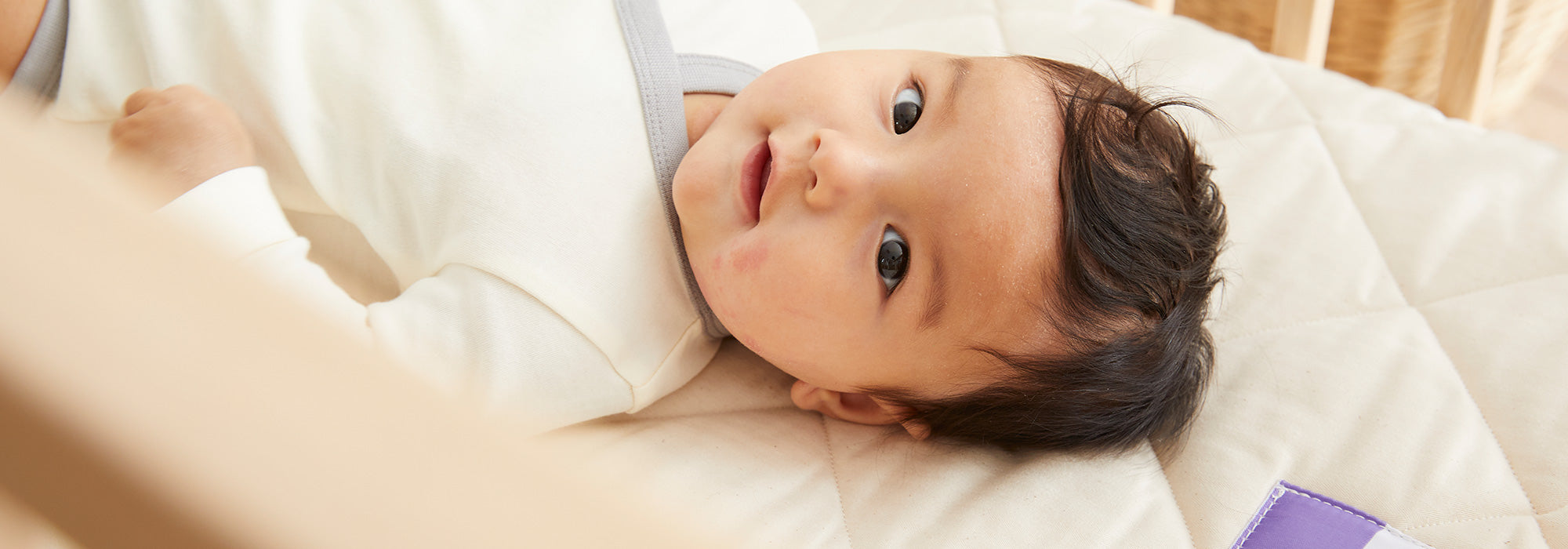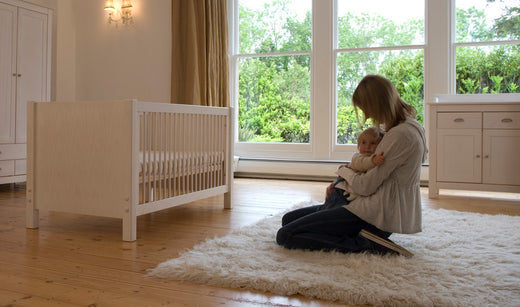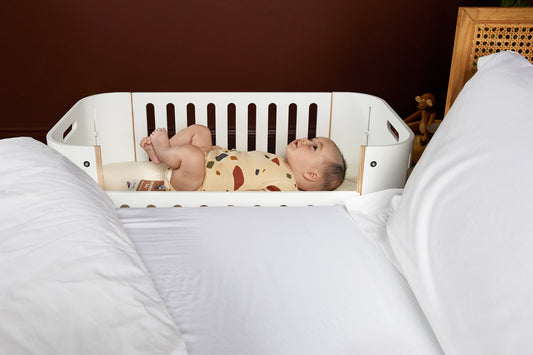Welcoming a newborn into your life is a joyful experience, and ensuring their safety and comfort during sleep is of utmost importance. With so many sleepwear options available, it's essential to make informed decisions that prioritise your baby's well-being.
Why is the Right Sleepwear Important?
Understanding your newborn's sleep patterns is the first step in choosing appropriate sleepwear. Babies sleep for extended periods, often up to 16-17 hours a day. This should highlight the significance of investing in high-quality, comfortable sleepwear in ensuring that your little one gets the restful sleep they need.

Guidelines for Different Seasons
The seasonal changes in temperature mean that you will need to dress your newborn according to the temperature, but it is not as simple as just layering them up when it’s cold and stripping them back when it’s hot.
Winter: Keep them warm, but don’t overheat
Winter nights can get chilly, but it's crucial not to overdress your baby. Opt for a warm, breathable onesie and consider layering with a sleep sack for extra insulation. Overheating can reduce the chance of SIDS, and according to the Lullaby Trust, research shows babies are better to be cooler than too hot.
Summer: Prioritise breathable fabrics and airflow

In warmer months, lightweight and breathable fabrics like cotton are ideal. Dress your baby in a comfortable onesie, ensuring proper ventilation to prevent overheating. Err on the side of caution and keep your baby nice and cool.
Autumn and spring: Dress your baby for temperature fluctuations
During the transitional seasons of autumn and spring, layering is key. You can start with a onesie as a base layer and add a wearable blanket or sleep sack that can be easily removed if the temperature rises.
Stocking Up on Sleepwear
Onesies and Sleep Suits
Onesies are versatile staples for newborn sleepwear. They're easy to put on and take off, keeping your baby comfortable during naptime and nighttime.
Sleep Sacks and Wearable Blankets
Sleep sacks provide a cosy sleeping environment without the risk of covering your baby's face. Choose the appropriate thickness based on the room temperature.
Pyjamas and Footed Sleepers
Pyjamas with built-in feet ensure your baby's toes stay warm. Try to avoid sleepwear with drawstrings to prevent the risk of entanglement.
Choose Safety Over Style
While cute sleepwear is tempting, safety and comfort should always come first. Opt for sleepwear with minimal embellishments to prevent choking hazards. While fashionable sleepwear is enjoyable, make sure your choices align with safe sleep guidelines.
Caring for Newborn Sleepwear
Follow care instructions to maintain the quality of sleepwear. Use fragrance-free, hypoallergenic detergents to prevent skin irritation.
Soft sleepwear contributes to your baby's comfort. Avoid using fabric softeners, as they can reduce the flame resistance of sleepwear.
What You Need to Know About Swaddling
Swaddling can provide comfort to newborns by mimicking the snugness of the womb. However, precautions should be taken if you choose to swaddle your baby.
The Lullaby Trust advises the following when it comes to swaddling:
- Sleep your baby on their back, never on their side or front.This is the safest sleep position for any baby, whether swaddled or not.
- Use thin swaddling materials such as muslin or a cot sheet, never use blankets, as this could quickly cause your newborn to overheat.
- Use minimum clothing under the swaddling material and leave the baby’s head uncovered - unless advised to by a medical professional, babies do not need hats indoors!
- When swaddling, check your baby’s temperature by touching the back of their neck. If the skin is hot or sweaty, remove one or more layers of their bedclothes.
- Be sure also not to wrap your baby’s arms inside the swaddling material if they have started to show signs of rolling, as they may struggle to get back onto their back without the use of their arms.
Swaddle blankets, swaddle sacks and swaddle bags are all available to buy, but it is important to ensure that whatever you buy meets the required safety standards. You should also always read the product’s guidance as some products’ sizing is based on the baby’s weight rather than age.
Don’t Neglect the Bedding and Mattress
Just as important as what you’re little one wears to sleep in is what they sleep on. Check out our range of firm, hypoallergenic, and breathable mattresses which will ensure your baby gets a great night’s sleep while keeping their temperature at the optimum level. Made sustainably since day one, back in 1999, our nursery mattresses continue to help healthy babies grow, decades later.
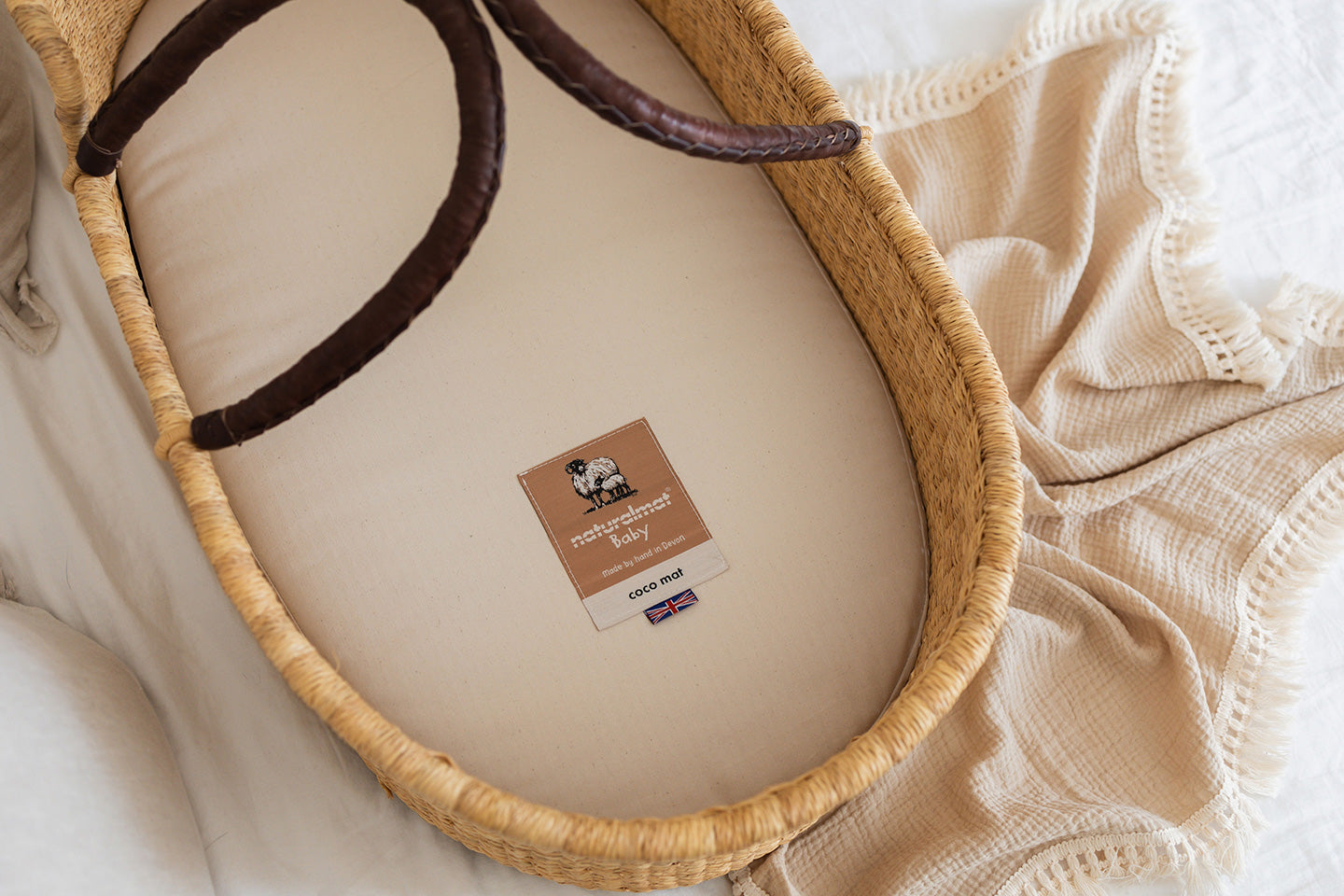
A firm and flat crib or moses basket mattress is essential for your baby's safety. Avoid using pillows, crib bumpers, or stuffed animals in the crib to prevent suffocation hazards. We have a lovely moses basket, weaved by a co-operative in Northern Ghana, using veta vera grass (also known as ‘elephant grass’) which grows locally that we pair with our Crib Coco Mattress. Learn more about the Moses Basket with Coco Mat.
Ensure the mattress fits snugly within the crib frame to prevent gaps where your baby could become trapped. We have a range of mattresses to fit popular crib brands, such as Leander, Snuzpod, Stokke and more, so you can be sure you’ll get the perfect fit!
What a newborn should wear while sleeping depends on the season and their temperature - it isn’t a one-size-fits-all approach! Prioritising comfort and safety ensures your baby sleeps soundly while reducing the risk of potential hazards. Remember to adhere to safe sleep practices and consult reliable sources such as The Lullaby Trust for guidance.
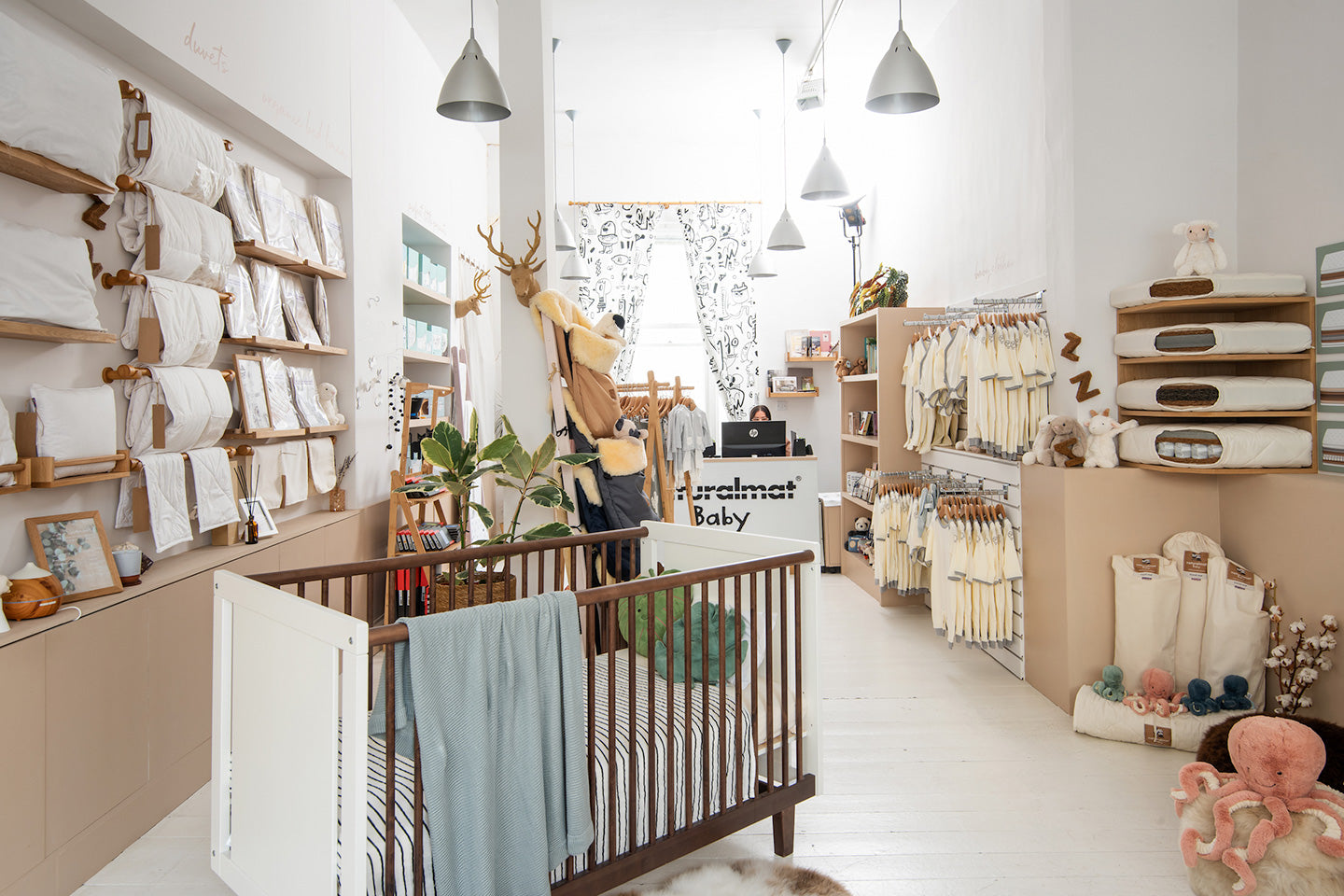
You can also pick up Mori, Wee Gallery sleepwear from our Notting Hill Showroom for your baby or as a gift. We are open Monday to Saturday from 10am.

